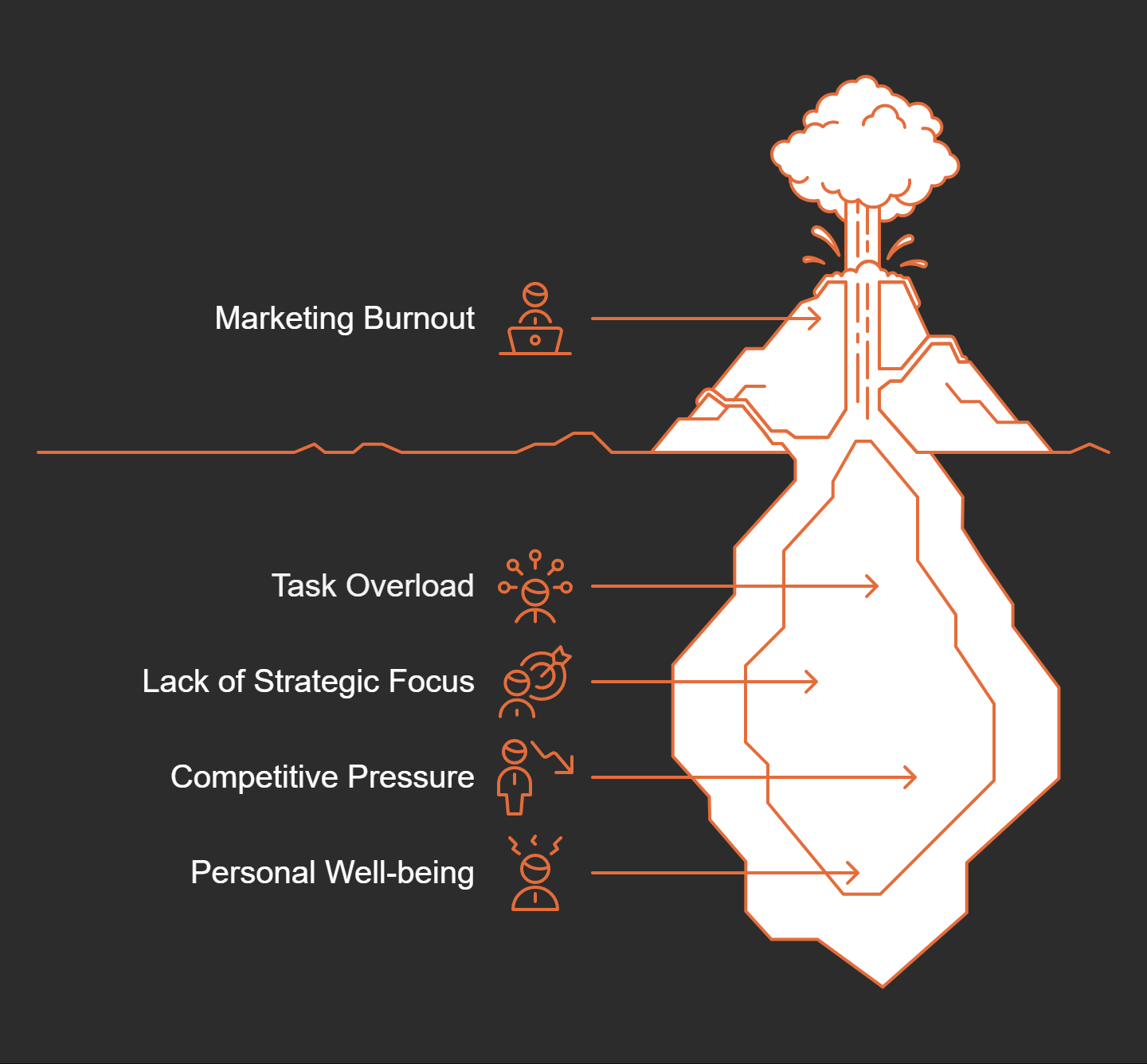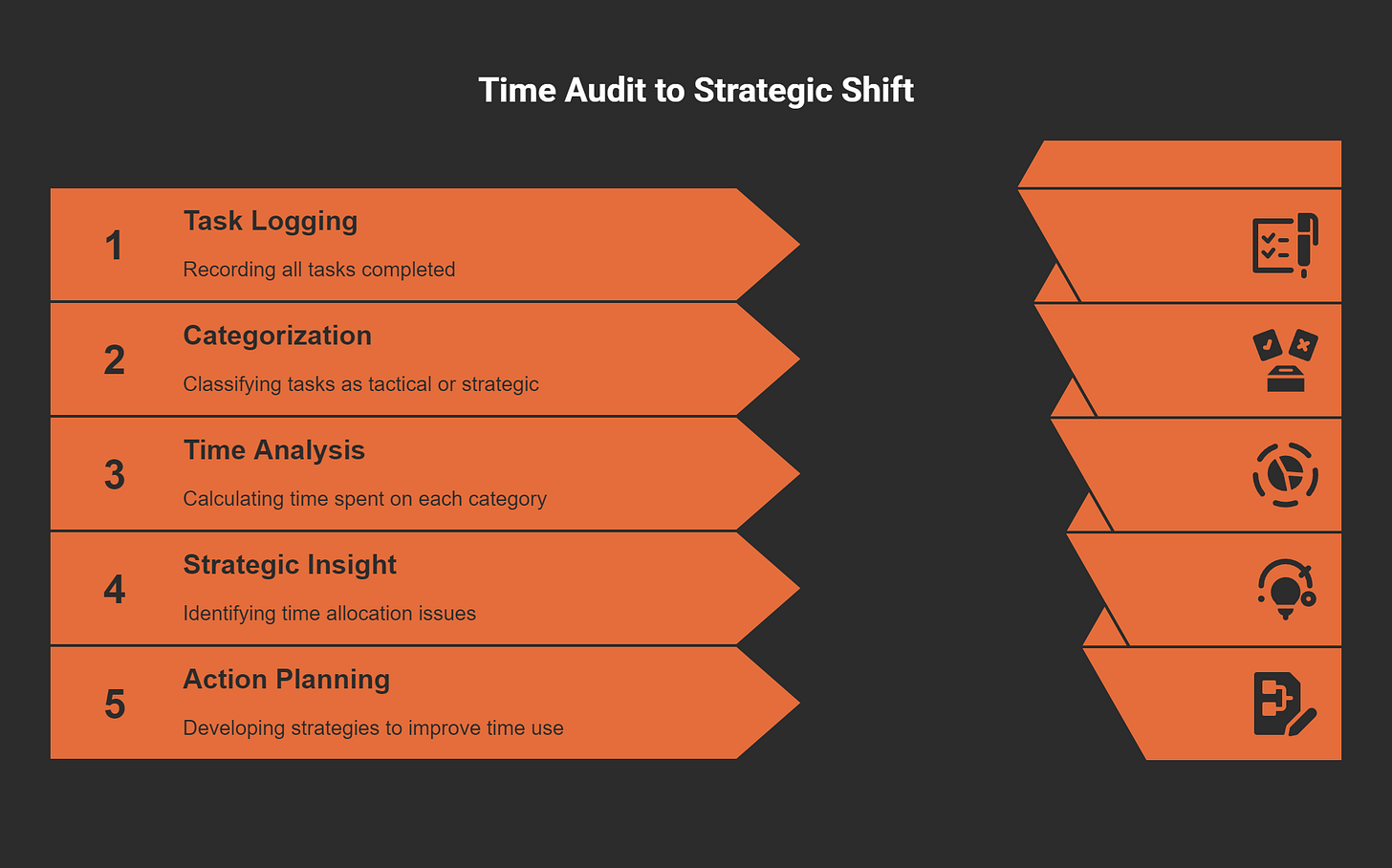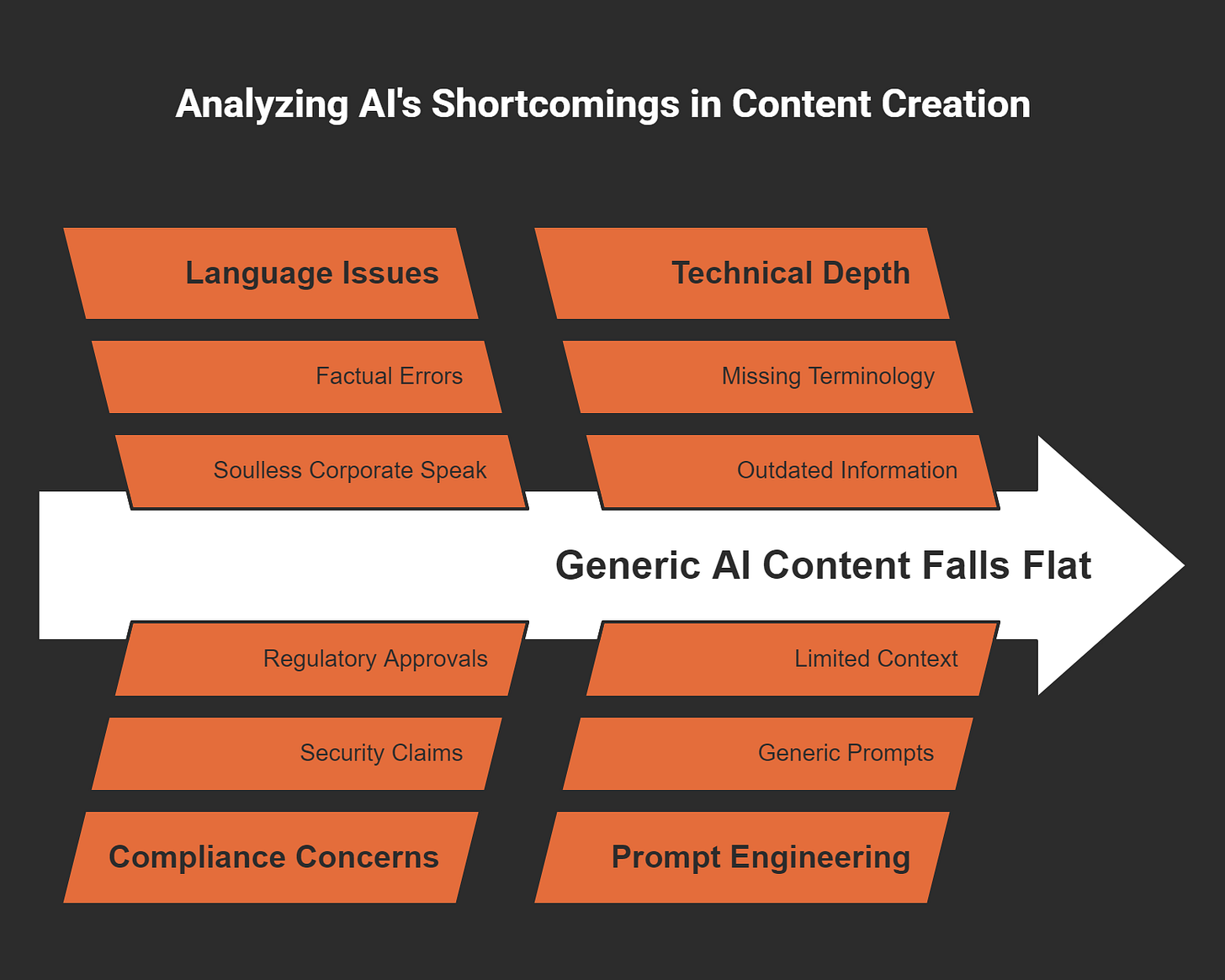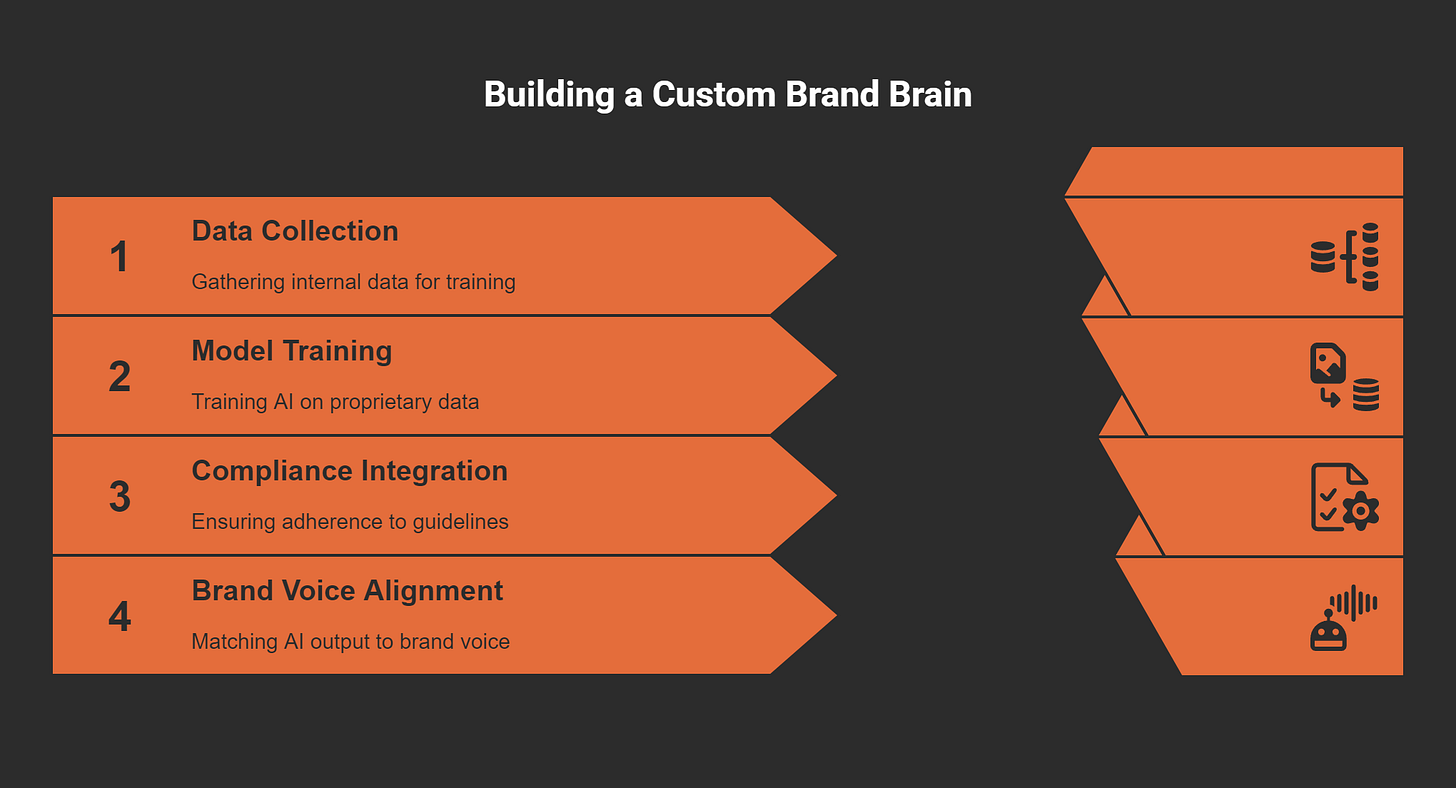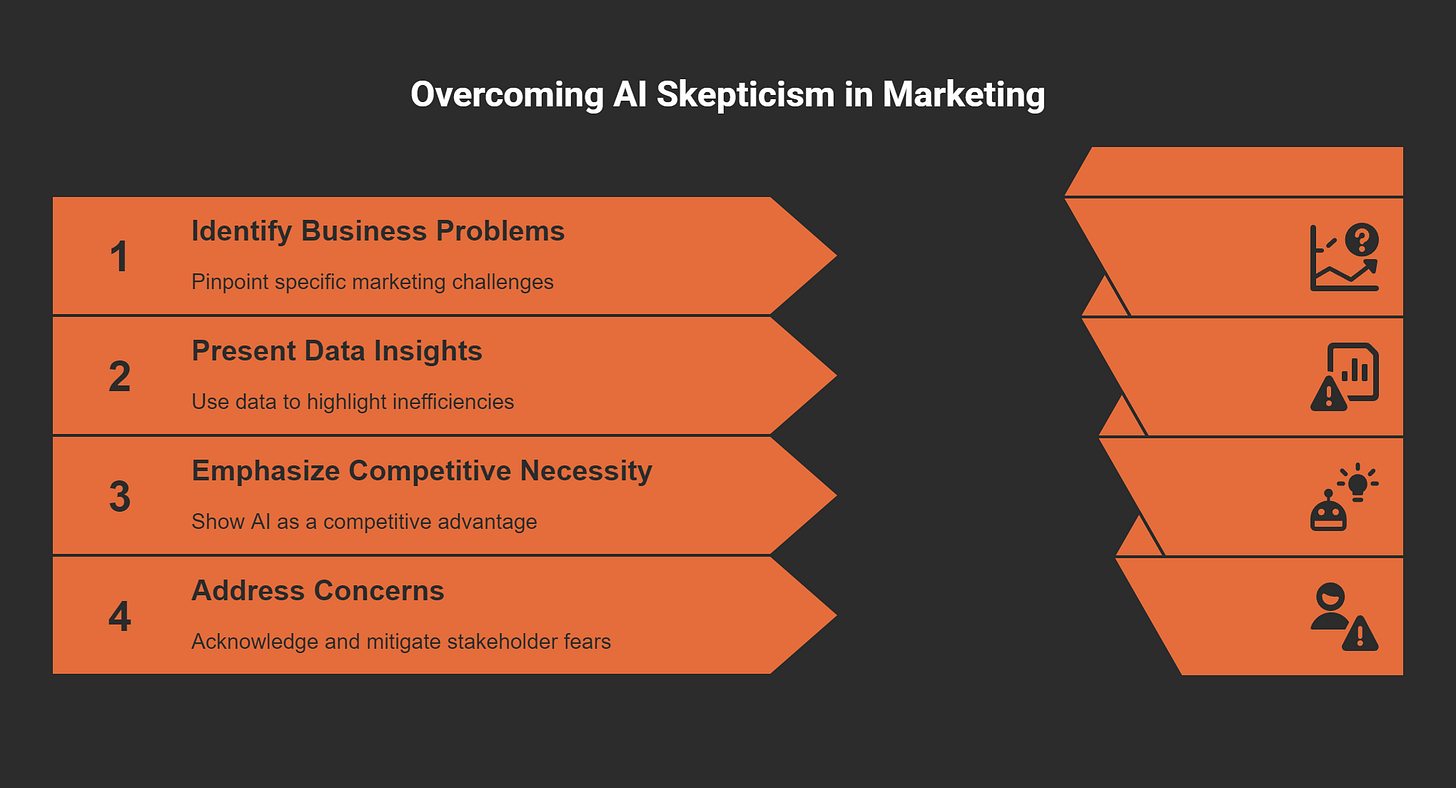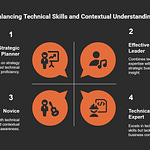Let’s start with a confession: The first time you crack open ChatGPT to churn out a week of social posts, it’s a little like biting into what you thought was a gourmet burger, only to find it’s all bun, no flavor. I’ve been there. Fresh off another late-night email blitz, turnover pizza slice in hand, drowning in tasks that felt both urgent and pointless, my passion for marketing started losing its sizzle. But what if I told you the most powerful asset you have isn’t another analytics dashboard—it’s the mind-numbing time you spend repeating yourself? I’m peeling back the curtain on how reclaiming that lost time (and sprinkling in the *right* AI) can change everything for you—and the humans around you.
The daily grind: Where did all your hours go?
Ever feel like you're drowning in tasks but making zero progress on what actually matters? You're not alone.
"When I worked as a marketing manager at a mid-sized software company, my days followed a predictable pattern," shares a marketer who lived the burnout cycle firsthand.
A Day in the Life of the Modern Marketer
8:30 AM: You arrive, coffee in hand, optimistic about tackling your strategic projects today.
8:35 AM: You open your inbox. Fifteen new requests overnight. Three from your boss demanding campaign metrics. Four from sales wanting custom content. Two product announcements needing immediate promotion.
9:15 AM: Your carefully planned day? Already derailed. That quarterly strategy you've been trying to work on for three weeks? Pushed aside. Again.
Instead, your day dissolves into:
Updating social posts across five platforms
Tweaking ad copy that never feels quite right
Pulling performance reports from multiple platforms
Reformatting everything into executive-friendly presentations
Lunch? That's just another meeting about email open rates or landing page conversions while you eat at your desk.
The Brutal Numbers Behind Marketing Burnout
The average marketer's 55-hour workweek breaks down in a way that should terrify us:
40% on content creation - endless blogs, social updates, and newsletters
25% on reporting/analysis - pulling data from multiple platforms into cohesive stories
20% on campaign adjustments - constant tweaking of ads, bids, and targeting
11% on meetings that rarely produce actionable decisions
Just 4% (about 2 hours) on actual strategic thinking
Meanwhile, your campaigns show a 30% increase in cost per acquisition and a 15% drop in conversion rates. The market's getting more competitive, but you have zero time to develop a thoughtful response.
The Real Toll of Task-Driven Marketing
This isn't just about being busy—it's about the invisible cost of tactical overwhelm:
Physical and mental exhaustion from working nights and weekends
Consistently missed deadlines despite working overtime
Strategic projects that remain permanently "on deck"
Zero headspace for the creative thinking that could transform results
You implement quick fixes for short-term gains because you simply don't have time to develop sustainable strategies. Your competitive analysis? Just a few forgotten bullet points in a document you rarely open.
The most frustrating part? You feel constantly busy but never productive in ways that actually matter—either for your company's growth or your own career advancement.
This isn't just an occasional bad day. For many marketers, this is every single day.
How Time Audits Sparked A-ha Moments (And Why You Need One)
Ever feel like you're working non-stop but getting nowhere? That was me—constantly busy but missing deadlines. Something had to change.
"I decided to track exactly how I was spending my time. The results shocked me."
My Eye-Opening Time Experiment
After a particularly brutal month of working every weekend yet still falling behind, I decided to get radical. I tracked every single minute of my workday for an entire week.
The process was simple but revealing:
Log each task as I completed it
Note how long it took
Categorize as either "tactical" or "strategic" work
I thought I was being strategic. I was wrong.
The Shocking Truth: Where Did My Time Go?
Out of a 55-hour workweek (yes, you read that right), I spent a measly two hours on actual strategic thinking.
That's less than 4% of my time going to high-value projects.
The rest? Swallowed by quick-fix tactics and repetitive tasks that felt productive but weren't moving the needle.
From Personal Discovery to Department-Wide Revelation
Was it just me? I had to know.
So I expanded the experiment, asking everyone in marketing to log their tasks for two weeks. The department-wide trend was even more alarming:
72% of our collective time disappeared into tactical, repetitive tasks
43 hours per week consumed by content creation across the team
38 hours weekly spent on campaign management and reporting
No wonder our competitors were starting to outpace us! While we were stuck in the tactical weeds, they were publicly discussing their AI initiatives in earnings calls.
The Strategic vs. Tactical Divide
This time audit exposed the fundamental problem plaguing many marketing teams: we implement quick tactics for short-term gains rather than developing solid strategies for sustainable results.
The biggest culprits stealing our strategic time?
Endless content creation cycles
Repetitive reporting that nobody fully reads
Manual campaign adjustments that could be automated
Your Turn: Conduct Your Own Time Audit
I dare you to try this exercise yourself. Fair warning: it's usually worse than you think.
Here's a quick way to get started:
Track your tasks for just one week (be honest!)
Categorize each as either tactical or strategic
Calculate your percentages
Prepare for a possible existential crisis
This reality check might be uncomfortable, but it's the catalyst for change you need.
When you realize how little of your week is spent meaningfully, you'll suddenly find motivation to fix the system—not just work harder within a broken one.
And that's exactly the a-ha moment that can transform not just your productivity, but your entire approach to work.
Riding the AI Hype Train—And Why It Stalled
Ever tried using ChatGPT for marketing and felt the results were just... missing something? That's exactly what happened when our team first experimented with AI for content creation.
The Great AI Experiment
It started innocently enough. Facing a content bottleneck and debating whether to hire another writer, I began quietly testing ChatGPT in my evening hours. The initial experience was exhilarating—instant responses for social posts, email subject lines, and product descriptions that seemed decent at first glance.
This was different from the clunky marketing automation tools we'd struggled with before. The speed was incredible. The potential seemed limitless.
So I got bold. I systematically fed it information about our product features, benefits, and target audiences, then asked for complete marketing assets—social posts, blog outlines, even email sequences.
The Stealth Test
Confident in the results, I selected ten AI-generated social media posts, made minor edits, and sneaked them into our content calendar. Nobody would notice the difference... right?
"The language is too generic. Where's our usual voice? Where's the technical expertise we pride ourselves on?"
Those were the exact words from our creative director during the next content review. She immediately flagged eight of the ten AI-generated posts as problematic. My cover was blown.
Where Generic AI Falls Flat
Looking back with fresh eyes, the problems became obvious:
Soulless corporate speak: One post actually used the phrase "revolutionize your workflow with our game-changing new feature." We hadn't used language that generic in years.
Compliance nightmares: Another post claimed our product "eliminated all security concerns"—something our compliance team would never approve.
Factual errors: The AI confidently cited outdated pricing models and competitors who'd exited the market years ago.
Missing technical depth: The posts lacked the specific terminology our audience of professionals expected from us.
The Prompt Engineering Rabbit Hole
I wasn't ready to give up. My next approach? Better prompts!
I provided more context about brand voice, fed it examples of our most successful content, and specified our target audience in excruciating detail. The results improved... marginally. The output was still generic, lacking the insider knowledge and authentic voice our audience had come to expect.
The Karaoke Machine Problem
That's when I realized: generic AI is essentially a karaoke machine. It knows the tune and can follow along, but it misses the meaning and emotion behind the song.
Off-the-shelf AI tools simply don't have access to what makes your brand unique. They can't tap into your internal data, company history, or deeply understand your industry's technical requirements without specific training.
The generic approach gave us content that was faster, but soulless and slipshod—recognizable as artificial the moment someone who knew our brand reviewed it.
The Big Reveal: Custom Brand Brains Beat Generic AI Every Time
In this eye-opening podcast episode, we uncover how leading companies are moving beyond generic AI tools to create powerful "brand brains" - custom AI models specifically trained on their own proprietary data that capture their unique voice, knowledge, and customer relationships.
Beyond Generic AI: The Custom Revolution
Ever felt like the AI content you're using sounds... well, like everyone else's? There's a reason for that.
After diving deep into academic papers on AI training and connecting with developers actually building these systems, I discovered something fascinating: the companies seeing real results weren't just using ChatGPT or other off-the-shelf tools.
They were doing something much more powerful.
These forward-thinking organizations were training custom AI models on their own internal data - everything from:
Customer support transcripts
Product documentation
Successful marketing campaigns
Sales call recordings
Internal knowledge bases
The result? AI that actually understands their business from the inside out.
Real-World Magic: The Financial Firm Case Study
Three weeks into my research, I found a case study that changed everything.
A financial services company had built what they called a "brand brain" - an AI model trained specifically on their internal knowledge, compliance docs, past campaigns, and customer interactions.
Unlike generic AI that struggled with industry-specific terms or regulatory requirements, their custom model:
Perfectly matched their brand voice
Adhered to strict compliance guidelines without fail
Connected meaningfully with specific customer segments
Never "hallucinated" facts about their products
Why Your Generic AI Feels... Generic
This was the fundamental difference between generic AI and custom brand brains. Generic AI has broad knowledge but limited depth in any specific area.
Think about it - how could a general AI possibly understand:
Your company's unique history and evolution
The specific pain points your customers face
The subtle messaging nuances that resonate with your audience
Your internal terminology and product knowledge
It can't. At least not without being trained specifically for it.
Building Your Brand Brain: The Cross-Functional Challenge
Creating a custom AI model isn't something marketing can tackle alone. You'll need:
IT support for infrastructure and integration
Data science expertise for model training
Legal guidance on data usage and compliance
Executive buy-in for resources and budget
The initial investment is significant - collecting, organizing, and preparing all your internal data takes time. But the potential return? Scalable, perfectly on-brand content that actually sounds like you.
Is your organization ready to move beyond generic AI and build something truly unique to your brand?
Wild Card: The Skeptic's Gauntlet—Pitching Custom AI When No One Wants It
In this final section, we explore the challenges of convincing skeptical stakeholders about AI's value in marketing. The episode highlights how to overcome resistance when finance won't fund, creatives fear being replaced, and old-school management shrugs off innovation.
The Wall of Resistance
Ever tried pitching AI to a manager who still prints reports and scribbles notes in margins? You're not alone.
Resistance comes in predictable flavors:
Budget objections: "We already cut 15% from our software budget this quarter!"
Creative concerns: "We can't have robots writing our brand voice!"
Job security fears: Will the content team be replaced?
Maturity doubts: Is the technology really ready?
Sound familiar? Even data analysts might question whether AI is developed enough for your specific needs.
Turning the Spotlight on Business Needs
The breakthrough came when I stopped talking about technology and started focusing on business problems:
"Our content production couldn't keep pace with demands across channels. Our campaign optimization was too slow to respond to market changes."
This shift in perspective—from "cool tech" to "critical solution"—changes everything. When you frame AI as the answer to scaling content production and making campaign management more responsive, ears perk up.
The Secret Weapon: Cold, Hard Data
Nothing convinces skeptics like evidence. I conducted a time study across our marketing department that revealed:
72% of collective time went to tactical, repetitive tasks
Content creation alone consumed 43 hours weekly
Campaign management and reporting: another 38 hours
These numbers weren't just interesting—they were alarming. When you show how much time your team wastes on tasks AI could handle, the conversation shifts from "can we afford this?" to "can we afford not to do this?"
Then there's competitive intelligence. When I pointed out that three competitors had publicly discussed their AI initiatives in earnings calls, our leadership started seeing AI not as a luxury but as a competitive necessity.
The Imperfect Pitch: Truth and Stakes
The most effective approach wasn't a polished, perfect presentation. It was showing up with palms-up truth:
Here's where we're falling behind
Here's the cost of doing nothing
Here's a low-risk path forward
By acknowledging concerns about data security and brand damage upfront, I built credibility. By showing concrete outcomes rather than hyping technology, I spoke my manager's language.
The transformation wasn't immediate—skeptics don't convert overnight. But presenting AI as a solution to actual business problems rather than shiny new tech created momentum where resistance once stood.
Remember: the goal isn't implementing AI. It's solving problems that matter to your business. When you focus there, even the most stubborn Excel-lover might just come around.



